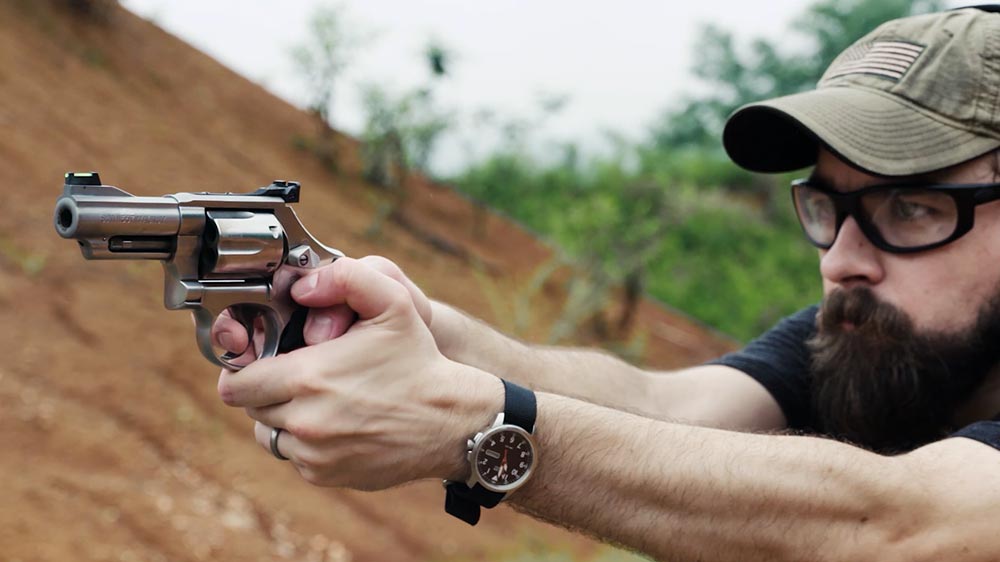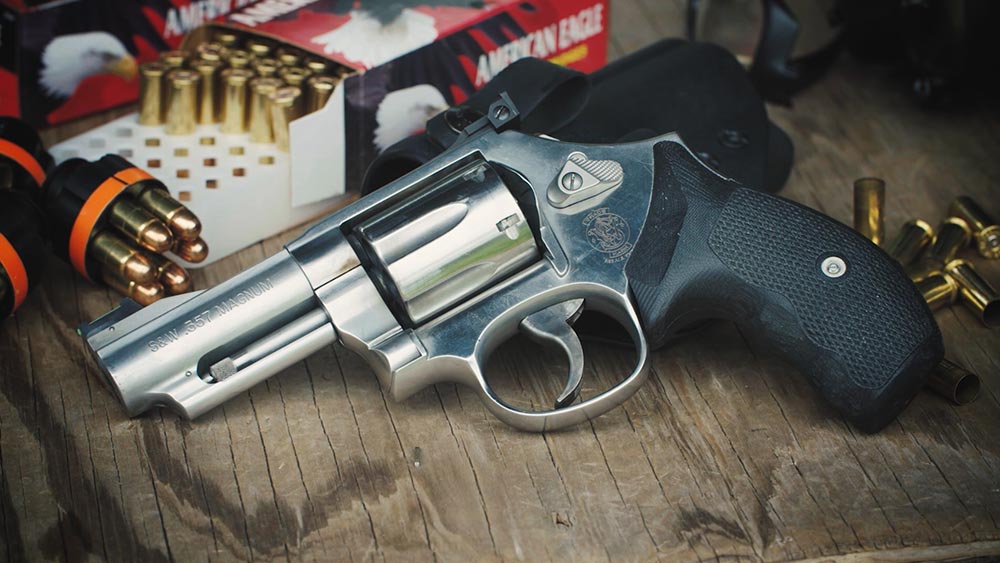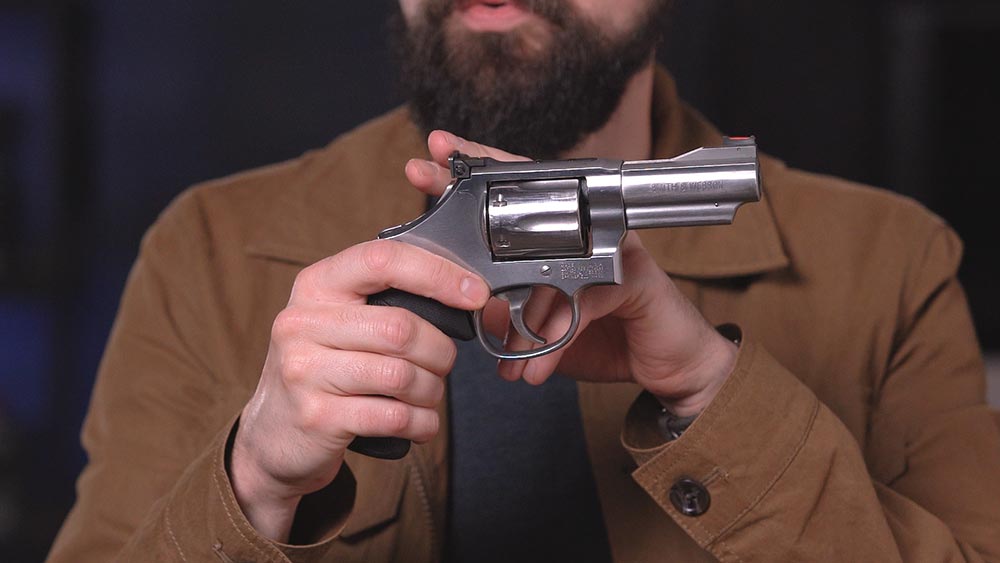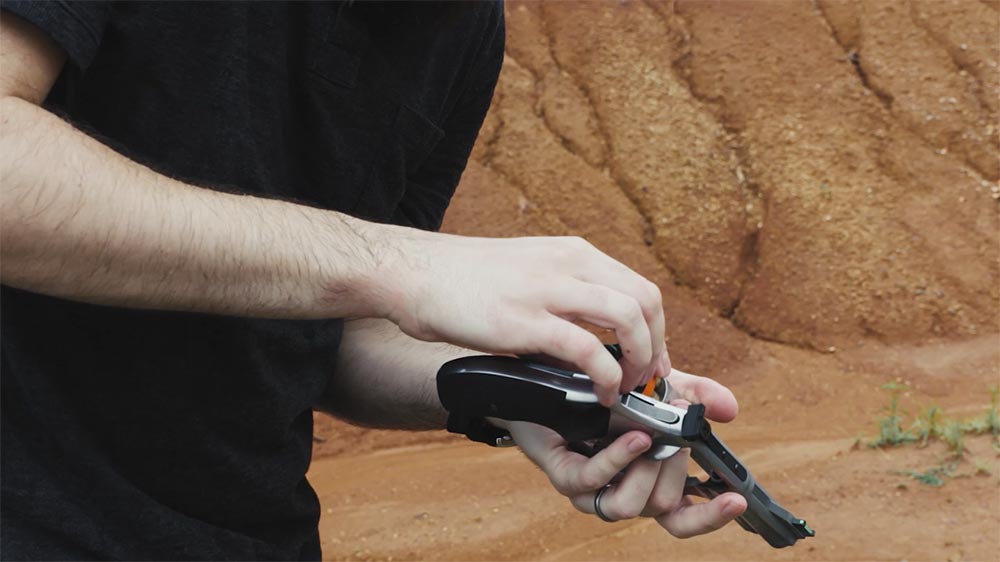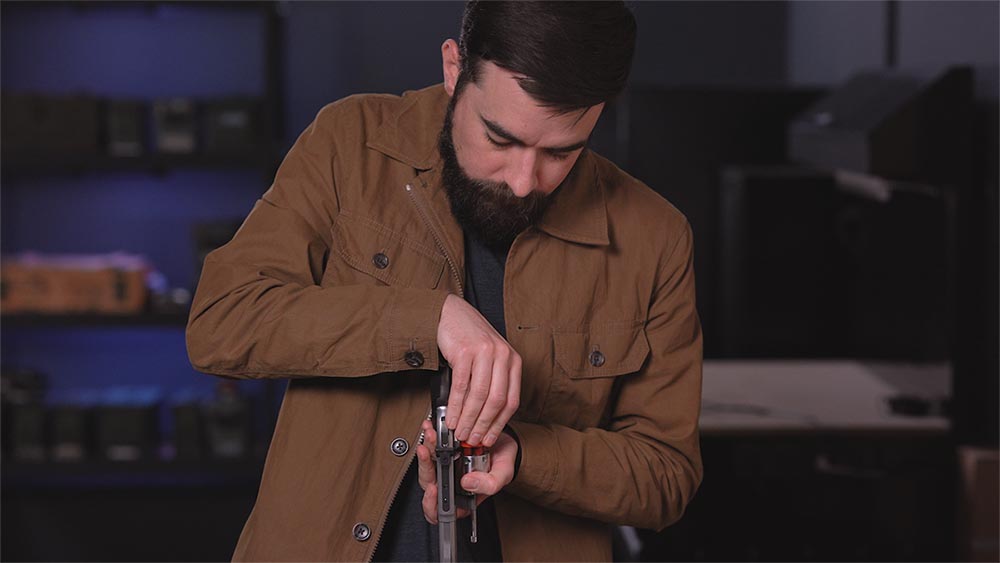It’s a blast from the past! (No pun intended. Probably). I’m looking back at one of our most popular videos ever to provide some new reflections, revisions, updates, and other commentary. Do I still think the Smith & Wesson Model 66 is the best revolver in the world? Did I ever really think that to begin with? Does it even matter? Find out in this 2020 update of The Best Revolver in the World.
Details are in the video below, or scroll on down to read the full transcript.
Lately, I’ve been looking through the Lucky Gunner content archives and I decided it might be time to update a few of those older videos. There are things I’ve changed my mind about since I started making content for Lucky Gunner almost eight years ago. There are videos that could use an update based on new products that have come out and new information that’s become available. And sometimes I wish I had just explained certain things a little better.
So today, we’re going to watch a few highlights from one of the most popular videos in the Lucky Gunner archives and I’ll interject periodically to offer revisions and other commentary. If this turns out to be a format you guys like, we’ll try more of them in the future. For now, let’s take a trip back to 2015 and watch some clips from a video titled “The Best Revolver in the World.”
The Best Revolver in the World: Revisited
“This is my Smith & Wesson Model 66 and it’s the best revolver in the world.”
Okay, let’s pause it right there. I promise, I’m not going to stop this thing every five seconds, but I gotta say something here.
A… not insignificant number of people who watched this video pretty much stopped right here and raced to the comments to let me know that some revolver other than the Smith & Wesson Model 66 is, in fact, the best revolver in the world.
And that’s probably my fault. At the time, our blog had a pretty decent following, but this is one of the first videos we posted to YouTube. I knew that in order to get an audience there, I would have to use some kind of sensational title in order to grab people’s attention. Well, it worked… kind of. But a lot of the attention that video has drawn over the years has been from angry people who think I have bad taste in revolvers. I asked for it, though.
Anyone who bothered to watch past the first ten seconds found out this video was not actually about one particular revolver being superior to another.
“Okay, that might be an exaggeration, but only slightly. I have some good reasons for believing this Model 66 is about as good as a fighting revolver can be, but first — a little background.
I’ve always been a fan of revolvers…”
What I’m about to spend way too much time explaining is that I like revolvers, but I think semi-autos are better in most respects. This video is really about me shooting and studying revolvers as much as possible to find out if maybe I was wrong about that.
So let’s just fast forward for a second…
“So for the first half of the year, I shot revolvers almost exclusively. Every week, I was at the range with a few boxes of .38 special and a couple of wheel guns trying to find one that would give me that balance of shootability and concealability.
After a lot of trial and error, the revolver I landed on is the Smith & Wesson Model 66. It’s a 6-shot .357 magnum made in 2004 and based on the Smith & Wesson medium size K-frame, a design that goes back to 1899.
The K-frames are a good middle of the road size — they’re not awkward to use like the small J-frames and they carry a lot easier than the bigger L and N frame Smith & Wessons.
I picked the 66 in particular out of all the other K-frame models mostly because of the adjustable sights, and the option to get a 3-inch barrel — it’s a nice balance between the short snub nose barrels and the full size 4-inch barrels that are more common.
The gun weighs just over 2 and a half pounds loaded with a holster. That’s about 20% heavier than my M&P. It’s also a little longer, and the grip sticks out farther, but I can still conceal it with a little effort.”
Okay, I really should not have glossed over that point so quickly. The difference in the size and weight of these two guns is actually a pretty big deal.
This video was really supposed to be the conclusion of the Wheel Gun Wednesday series that I had started on the Lucky Gunner Lounge blog six months earlier. My original goal was to find a revolver that was roughly equivalent in size and weight to my everyday carry gun and see if I could learn to shoot that revolver just as well.
The eventual conclusion was that even when I set up a revolver with what I considered to be the ideal configuration — the Best Revolver in the World — it was still not any better as a self-defense tool than a boring, mostly stock, plastic 9mm.
In hindsight, what I actually did was pick the smallest revolver that I could already shoot fairly well. That ended up being a Model 66, which was quite a bit larger and heavier than the M&P Compact I was carrying at the time.
But it doesn’t really matter. If a compact nine is your starting point, any way you look at it, there is no service caliber revolver in the world that is as easy to carry as a compact 9mm that is also as easy to shoot as a compact 9mm. I did get around to making that point eventually, but that really should have been the focus of this video. Instead, I got side-tracked with all kinds of other stuff. Like how much fun it is to customize a Smith & Wesson K-frame.
What Do You Mean, “Un-American”!?
“So the first thing I did to this Model 66 was improve the action.
I installed a few different springs until I found a combination that lightened up the double action trigger a little bit, but would still reliably ignite the primers on my carry ammo.
And thanks to this excellent vintage 20th century instructional DVD from Jerry Miculek, I also smoothed out some the rough spots in the action.
The final result is a buttery smooth double action trigger that breaks at about 8.5 pounds.
I changed out the factory adjustable sights for a for the more durable Rough Country rear sight from Bowen Classic Arms. The original front sight was fiber optic, which I like, but it had a rounded profile that makes it tough to get good sight alignment on longer shots, so I got rid of that in favor of a square fiber optic from Cylinder and Slide.
For a self defense revolver, you’ve got to get rid of that hammer spur and convert it to double action only. Using the single action feature on self-defense revolvers is, frankly, un-American. And the hammer spur will get caught on clothing during the draw stroke anyway.
So I installed the spurless Evolution hammer from Apex Tactical. I also got an XP firing pin from Apex, which helps with more reliable primer ignition.”
Okay, lots to talk about there. Let’s start with the phrase, “using the single action feature is un-American.” That has probably upset even more people than claiming that the Model 66 is the best revolver in the world.
“Un-American” was meant to be a joke because I kept noticing people using that word to describe any kind of behavior they didn’t approve of. It wasn’t a very good joke. A lot of people took it as an insult to anyone throughout all of history who has ever carried a single action firearm. I did want to make a point that I knew a lot of people would find hard to swallow, but I didn’t really bother to explain that point in any detail. So people got offended for all of the wrong reasons.
Some time later I did try to clarify that message with another video called Why All Defensive Revolvers Should Be Double Action Only. That was another case where using an inflammatory title primed the audience to feel defensive from the very beginning. I also, again, took way too many detours to make what should have been a very simple point.
Making the Case for Double Action Only… Again
So let me try this for a third time and hopefully, it will be offensive for the right reasons. If you have a modern double action revolver that you intend to use for self-defense, thumbing the hammer when you’re practicing with that revolver is a crutch to compensate for the fact that you don’t know how to shoot. In a real fight to save your life, you will not have time to cock that hammer, and doing so introduces opportunities for your thumb to slip or fumble that are not present if you simply fire the gun double action.
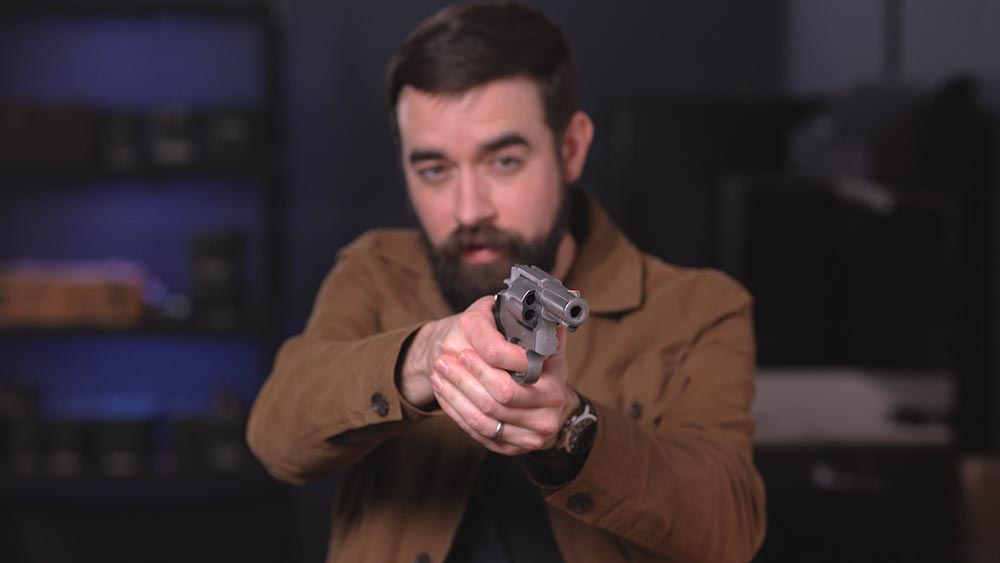
Running a double action trigger is not a hard skill to learn. You can do it in just a couple of weeks of dry fire practice at home — 10 minutes a day. And once you’ve got it down, you will rarely, if ever, feel the need to cock the hammer and fire that gun single action. Even on the hard shots — you can quickly learn to finesse that trigger without disturbing the sights.
That comes with a couple of caveats. Like, I know that some people with health issues don’t have the physical strength to pull a double action trigger. They’d probably be better off with a different gun, but if that’s not possible, obviously you just do what you have to do to get the gun to go bang. I also know a lot of revolvers have really heavy and gritty double action triggers. Especially some of the new ones. Don’t put up with that. Get it fixed or get a different gun. It’s really hard to learn double action with a bad trigger.
You’ve got plenty of options these days. The Ruger LCRs tend to have a really nice trigger right out of the box. The GP100 and SP101 are pretty decent, especially if you drop in a Wilson Combat hammer spring and then dry fire them a bunch. The Kimber revolvers and the new Colts also have good double action triggers from the factory. With Smith & Wesson, you pretty much have to go with either a Performance Center model or an older well broken-in gun.
These days, I am not nearly as emphatic about the issue of the hammer spur. If you learn how to run the double action trigger, I don’t think it’s a big deal if the gun has a hammer spur. I prefer it to not have one — at least not one this big. But if you put some serious practice into your drawstroke and that hammer isn’t snagging on your clothes, don’t worry about it. Just make sure you test it when you’re wearing multiple layers because that tends to make the snagging issue a bigger problem.
I also got a lot of questions about why I would go with a spurless hammer on this Model 66 to prevent snagging but then add this giant rear sight. That’s a good question. I did eventually have some snagging problems with the rear sight in the video. It wasn’t so much the sight itself as this big gap between the bottom of the sight and the top of the frame.
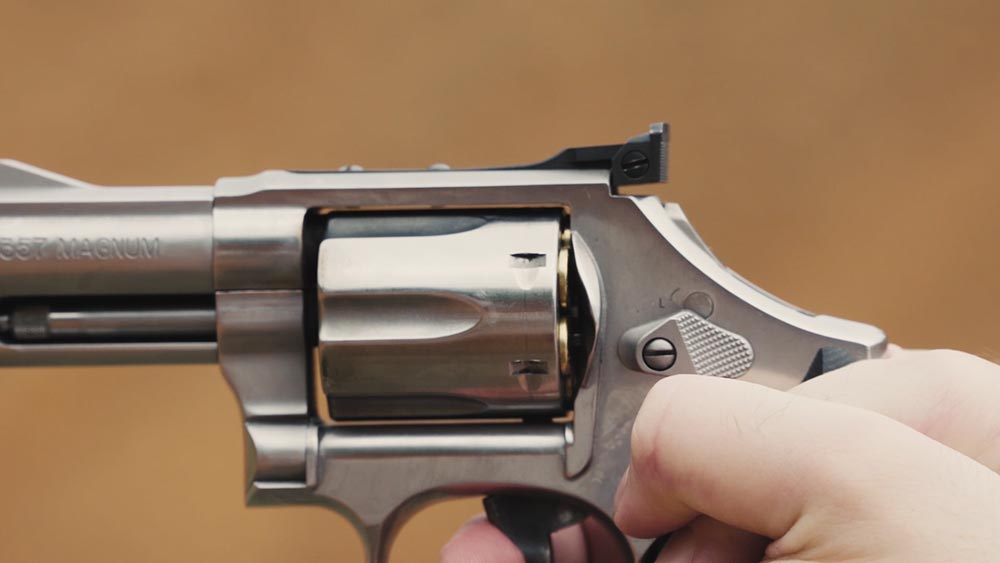
I’ve got a different set of sights on the gun now. The front is a shorter red fiber optic from Dawson Precision and that allowed me to use a much shorter Bowen rear sight blade. So now that gap is much smaller and I’ve filed down all the sharp edges to try and make it as snag-free as possible. Honestly, it’s still not really ideal.
A Better Best Revolver in the World
If I was going to set up “the best revolver in the world” today, it would still be a 3-inch Smith & Wesson K-frame, but I would probably change a few things. First of all, I would start with an older model because the actions tend to be much smoother and there’s no internal lock where the gun’s soul leaks out. I would also use a fixed sight revolver like this Model 64 and have a gunsmith machine the top for a set of larger semi-auto style fixed sights. The end result would be a lot like this Model 64 belonging to Darryl Bolke with custom work by Ted Yost. You get a bigger sight picture, but you still have a nice snag-free profile. For the front sight, I’d have a fiber optic or tritium insert.
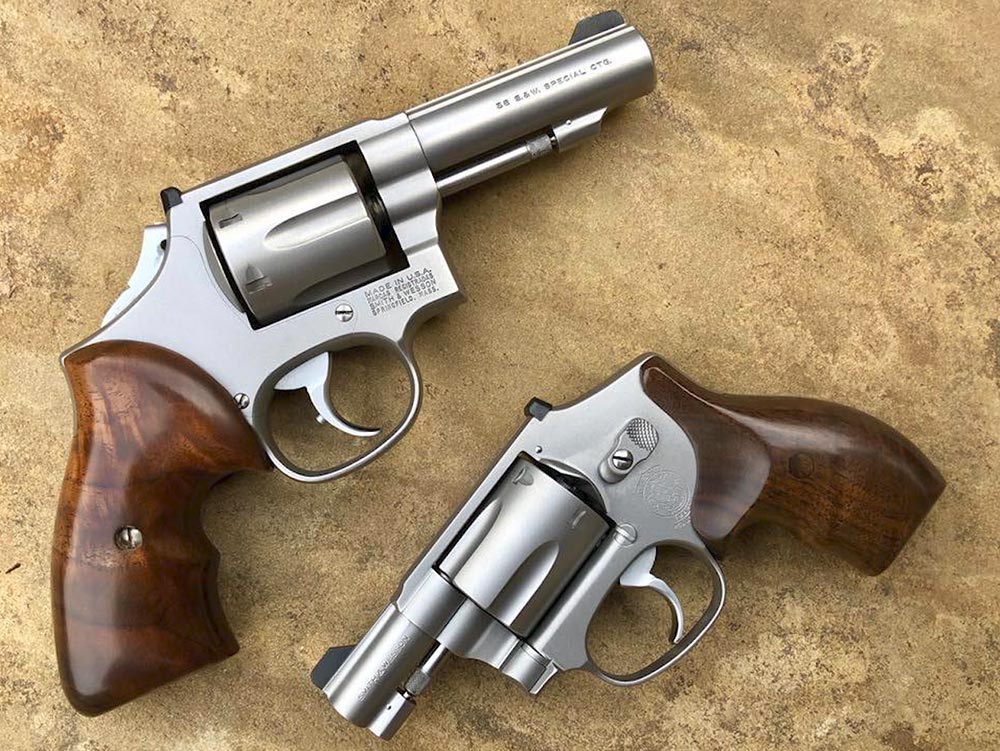
Then I would have the hammer spur mostly bobbed, but I’d want a little rounded-off nub left behind. That hammer spur does have one advantage — it lets you check for high primers. You partially cock the hammer so you can turn the loaded cylinder around and make sure there are no out-of-spec rounds that are going to bind up the action.
But custom revolver-smithing is not cheap and we’ve already established that I’m probably not going to carry this thing, so that makes it tough to justify the expense.
The S&W Internal Lock Plug
“You might have noticed this plug in the internal lock opening here just above the cylinder release latch. They don’t make the 3-inch Model 66 anymore and the used ones are getting tough to find, so I was able to save a few bucks by getting one that was made after Smith & Wesson starting putting these locks on all their revolvers. For liability reasons, our lawyer says I’m not supposed to talk about how to disable the lock, but he’s not here right now, so all you have to do is take off the sideplate [CONTENT REDACTED] and then it works just like any pre-lock revolver.”
I don’t care who you are, that was funny.
We do still have lawyers who won’t let me go into a lot of detail here. The lock plug I have in the video is one that I hacked together in my garage. I have since replaced it with a much nicer one I bought from sightpushertool.com. I will just say that if you are forced to shoot someone in self-defense and you do it with a gun that has a safety feature you have disabled, that is not going to look good to the DA reviewing your case. It may be easier for you to defend if you have also converted the gun to double action only since Smith & Wesson does sell DAO guns without locks. Either way, just be aware that plugging the lock puts you at a legal disadvantage even if your actions were justified.
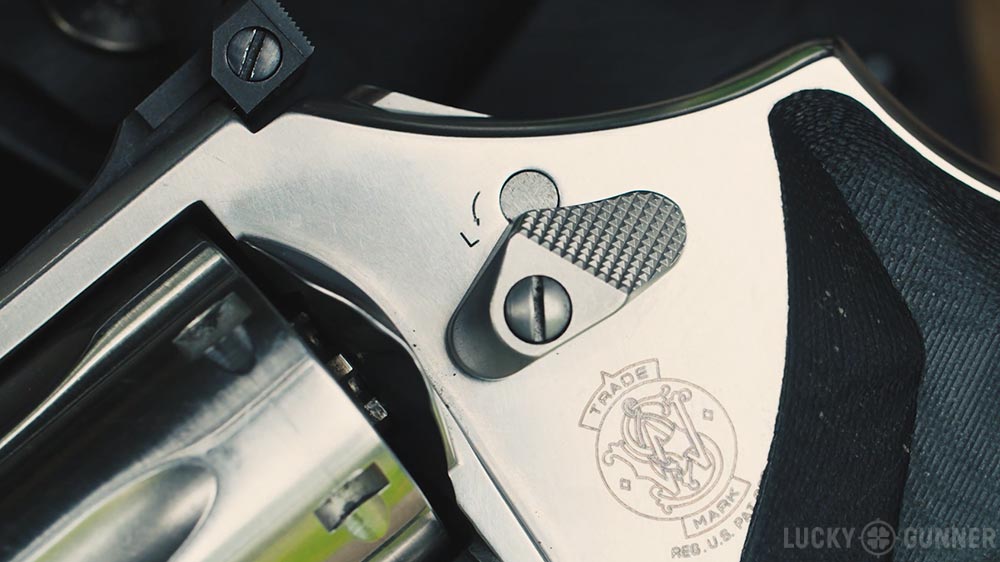
Okay, let’s look at one last clip…
Rethinking Revolver Emergency Reloads
“I got really comfortable with emergency reloads on this revolver using Safariland Comp II speed loaders. I couldn’t find a speed loader pouch that I liked, so I just keep the reload in my front pocket.
With this setup, I can reload in about 4 and a half seconds if everything goes smoothly. One of the only benefits of having such a low ammo capacity is that you get lots of opportunities to practice reloads at the range. It doesn’t take long to get in plenty of repetitions, even if you don’t set aside much time to specifically work on reloads.
A three-inch K-frame is pretty bulky compared to a five shot snub nose, but a medium size revolver offers some pretty compelling benefits. That full size grip that’s such a pain to keep concealed is really nice to have when you go to draw the gun. And the extra bulk really helps out when you’re trying to keep the sights still on targets out past 10 yards. And the recoil — it’s hardly even noticeable with .38 special ammo.
I could load it with magnums and it would be quite a handful, but there’s not much evidence to suggest that running .357 instead of a good .38 +P load would help end a fight any quicker. I keep my 66 loaded with Speer Gold Dot .38s. The recoil and muzzle flip is pretty much the same as the mild range ammo I’ve been training with, so really, I can empty the revolver as fast as I can pull the trigger.”
Okay, back that up a second. That is actually not a very good reload right there.
Speed loaders rely on gravity to get the rounds in the chambers, so the gun needs to be completely vertical. It can’t be tilted back or over to one side. That’s why I was having trouble getting the last couple of rounds to let go in that shot.
I know that revolver reloads have been the topic of some internet drama recently. I have no desire to debate the finer points of the various techniques. It’s not that I don’t have an opinion, I just think it would be a waste of your time to talk about it here. On the list of handgun skills you are likely to need, the revolver emergency reload is close to the very bottom. I’m not saying you shouldn’t know how to do it. You have to reload the gun anyway when you’re practicing, so you might as well learn how to do it fast. And of course you’re going to need to know how to do it if you shoot competitively.
But if you actually end up pulling off a revolver reload in the middle of a close-range gunfight, you very well might be the first armed citizen on record to have ever done it. That’s how rare it is. Even in law enforcement, I only know of one case and that only happened because the officer was reaching for his backup gun but he found a speed loader in his pocket instead.
Rethinking Ammo Capacity
If you’re really concerned about not having enough ammo in your gun to get yourself out of trouble, I highly recommend you just carry a gun that holds more bullets or carry a second gun. Even with semi-autos, emergency reloads almost never happen in justifiable shootings with armed civilians. Maybe that’s because most people aren’t fast enough to pull off a reload before the gunfight is over. Or maybe it’s because very few people actually carry spare ammo with them. But I think the main reason is that most civilian self-defense encounters are resolved before a reload is needed.
I say all of that because I think I gave way too much weight to the issue of ammo capacity in this video. If I were to compare a compact 9mm to a revolver today, I would come to the same basic conclusion, but I’d definitely emphasize different points. Ammo capacity would just be a minor footnote.
Yes, more bullets is more better. They’re nice to have, but probably not as important as we’d like to think. I believe it’s possible to make a good case for the semi-auto without even mentioning ammo capacity.
But this was just one of many videos and articles I’ve done comparing revolvers and semi-autos. The most recent was Pocket Pistols versus Snub Nose Revolvers and in that context, I think the snub nose actually comes out on top. If you think I forgot about the issue of reliability, you might want to check that one out.
You can’t really do justice to the semi-auto versus revolver discussion without being more specific about what kind of revolvers and what kind of semi-autos you’re comparing. It’s a complex debate you can’t easily reduce to a single issue. Of course, I’ve also never been one to shy away from beating a dead horse.
Even so, I hope you learned something new in this updated edition of “The Best Revolver in the World.” Let me know in the comments if you guys like this format and if there are any more Lucky Gunner videos from the past you would like me to update.


